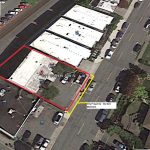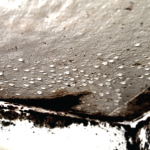Xeriscaping and Water Conservation for Businesses

With our significant yearly annual rainfall, Seattle may not seem like the typical environment for xeriscaping. But our moisture isn’t spread evenly throughout the year, and summers in the Puget Sound area are actual about as dry as some Arizona desert locations! This means that choosing xeriscaping for your landscape option can save you not only water but money during those dry summer months.
Xeriscaping is a type of landscaping that reduces the need for supplemental watering. While many people think of xeriscape as all rocks and cacti, this isn’t necessarily the case. The focus in a good xeriscape project is on native or other well-suited plants that are used to the local weather conditions, and on good soil that will hold and retain moisture. If you’re thinking of converting your existing landscape to a xeriscape, here are the important points:
- Use less grass. Turf needs much more water than other types of groundcover. Reserve it for specific areas (like spaces for play or recreation), and use mulch or other ground covers elsewhere.
- Love your soil. Healthy soil will retain moisture longer, which reduces the need for watering. Amend your soil with compost to keep it healthy, and cover exposed areas with mulch to retain water and help fight pests and weeds.
 Know your climate zone and plant accordingly. Figuring out your climate zone is easy with the USDA’s plant hardiness map. Seattle tends to be around zone 8b, but you can plug in your zip code to find out the hardiness zone in your exact location. Then, when planning your landscape, select plants that are well-adapted to your climate. Local nurseries and university extension programs are often a great source of advice on what will grow well in your area.
Know your climate zone and plant accordingly. Figuring out your climate zone is easy with the USDA’s plant hardiness map. Seattle tends to be around zone 8b, but you can plug in your zip code to find out the hardiness zone in your exact location. Then, when planning your landscape, select plants that are well-adapted to your climate. Local nurseries and university extension programs are often a great source of advice on what will grow well in your area.- Water smart. When you do water, switch to infrequent but longer watering to encourage your plants to form deep and stable roots. Try to use drip irrigation of something similar that can deliver water straight to the roots of your plants. And try to water at night or when it’s cloudy, when the sun won’t cause as much evaporation.
A properly selected and installed xeriscape will use much less water, and cost less to maintain, than a traditional landscape. Many xeriscape landscapes only need to be watered a few times a year, and some require no supplemental water at all!
A report from a climate similar to our Seattle summers found the following cost savings from switching to a Xeriscape landscape:
- Cost to convert: 50 cents to $2.04 per square foot
- Estimated payback period: 2.5 to 6 years
- Water savings: Costs cut by one-half to two-thirds
- Estimated annual savings: $1,900 to $14,100 (including water savings and maintenance costs)
Commercial properties, which have less of a need for recreational lawn space, are especially great choices for a water-wise landscape. Whether you choose xeriscaping for aesthetics, water efficiency, or to save money, it’s a great landscaping choice.






